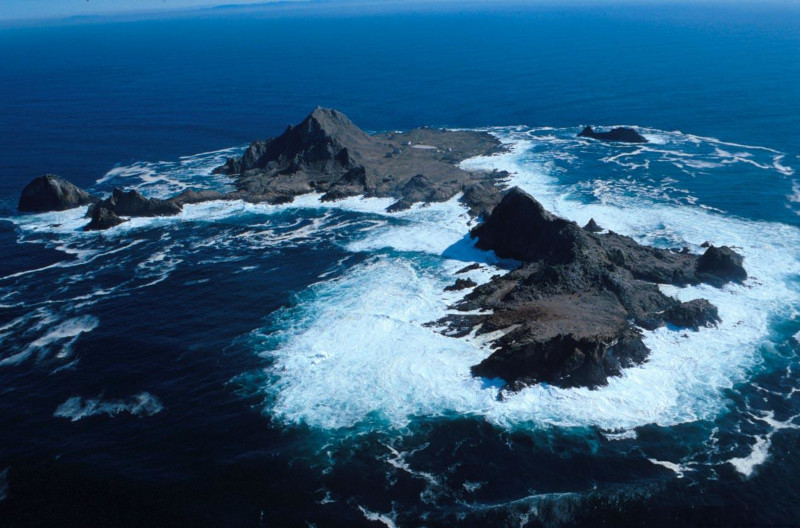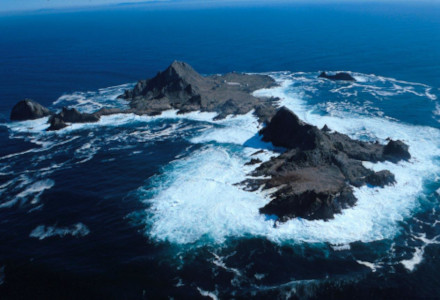
Farallon Islands Facts
- Remarkably, the Farallon Islands constitutes a small grouping of islands, outcroppings, and shoals, that many people remain completely unaware of. Astoundingly, however, that lack of awareness even extends to many of the inhabitants of the local area itself!
- That’s because, also known as the Farallones, the collection of formations remains something of a mystery to many. One other commonly used named collectively applied to the geological structures provides an indication of one reason for this.
- Many mariners, even today, have a high degree of respect for its dangers. These refer to the structures as the Devil’s Teeth Islands. That’s due to the presence of an unusually high concentration of treacherous underwater shoals around most of the formations.
- Members of local Native American tribes knew of the structures for centuries prior to the arrival of European explorers, of course. Records indicate, though, that even these intrepid explorers never ventured to them, due to their dangers, and religious beliefs.
- It’s believed that members of the Juan Cabrillo expedition, in 1542, were the first non-indigenous individuals to see them. The first confirmed sighting, however, occurred in 1579, by members of the expedition of the English privateer Sir Francis Drake.
- Currently, the Farallon Islands form the core of the Farallon Islands National Wildlife Refuge. Due to this, researchers form the only permitted visitors. This further extends to the surrounding waters, forming the Greater Farallones National Marine Sanctuary.
Related Articles
Farallon Islands Physical Description
The starkly beautiful Farallon Islands represent an impressive combination of small islands and sea stacks. As such, they easily impress those who see them in a number of ways. Sheer physical size, however, doesn’t rank among those factors that make an impression.
That’s due to the fact that, both individually and collectively, these formations remain comparatively small in size. The dozens of individual formations come in widely varying shapes and sizes, though. Each further presents its own distinctive nature to the viewer.
In total, however, the entire group only covers an area equaling approximately 103.6 sq acres (41.9 sq ha). A single island, known as Southeast Farallon Island, furthermore, holds the vast majority of the total area. This island measures roughly 95.8 sq acres (38.78 sq ha).
Most of the impressive islands and seas stacks also display a prominently pyramidal shape. The highest point of any of the formations, though, only measures about 357.6 ft (109 m). Some of the various islands do, however, have relatively small flatter areas.
The inexorable process of erosion, both by wind and wave, has also helped shape the intriguing Farallon Islands. This holds especially true of the many sea stacks. Many of these present passageways and even keyhole-shaped openings through the structures.
Farallon Islands Location, Formation, History, and Ecology
The visually stunning Farallon Islands formed in a part of the world already well known for its abundance of geological marvels. That’s because it formed as part of the continent of North America. Its precise location, though, may come as a surprise to many of you.
That’s due to the fact that it actually sits in an area bearing the similar name of the Gulf of the Farallones. It’s just 30 mi (48 km) off the coast of the city of San Francisco, California, in the United States! On a clear day, in fact, it’s actually visible from the mainland.
The various components of this remarkable formation represent tiny outcroppings of the Salinian Block. That’s a huge granitic portion of the local continental crust. Movement of the Pacific Plate eventually moved it to its present location over a vast period of time.
The current name of the formation arose from the words of Friar Antonio de la Ascencion. He formed part of another expedition to the region, in 1603. For several centuries following this time, seal hunters heavily exploited the islands, for both seal fur and eggs.
Despite the stark landscape of most of the Farallon Islands, a surprising number of animals appear there. In fact, one of the largest seabird colonies in all of North America resides on the islands. Large numbers of migratory birds also stop over on these formations.
A total of five species of pinnipeds also either live on or visit the site. This includes both seals and sea lions. Several varities of whales also appear in close proximity to the islands and sea stacks. The huge number of pinnipeds, however, also draws quite a few sharks.
Features Sharing Its Region
Check out our other articles on 4 Awesome African Trees, Bowmouth Guitarfish, Victoria Falls, Platypus, Nepenthes pervillei, Saltwater Crocodile, New Zealand Giraffe Weevil

